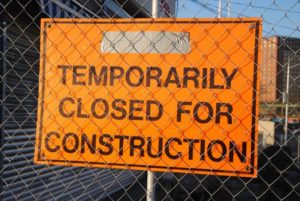 As the weather changes, different safety issues arise. In the summer, there are warm weather hazards to be aware of such as heat stroke and dehydration. Now that we are moving into the colder months, you should stay aware of how this change affects your employee’s safety and your bottom line.
As the weather changes, different safety issues arise. In the summer, there are warm weather hazards to be aware of such as heat stroke and dehydration. Now that we are moving into the colder months, you should stay aware of how this change affects your employee’s safety and your bottom line.
Protect Your Employees
Cold, wet weather presents a variety of potential hazards for workers. These hazards can include cold stress, slipping and falling and seasonal illnesses The Occupational Safety and Health Administration (OSHA) has created recommendations to follow in order to minimize these hazards. According to OSHA, “employers have a responsibility to provide workers with employment and a place of employment which is free from recognized hazards, including winter related hazards.”
Workers may experience physical symptoms from colder weather, known as cold stress. This is where the body can no longer maintain its regular temperature. Fingers and toes can become less sensitive and frostbitten as well, which affects dexterity in operating machinery.
Slipping and falling on wet icy surfaces also becomes a hazard during the colder months. To address these hazards, many companies will provide their workers with hats, gloves, jackets and other weather protective gear. While OSHA doesn’t require this, it is highly recommended.
In addition, they recommend the following precautions be taken:
- Provide engineering controls for your workers to cope with cold (radiant heaters);
- Train supervisors and employees to recognize the signs of cold stress;
- Schedule work during the warmest time of day;
- Schedule breaks in warm areas; and
- Have employees work in pairs.
Protect Your Schedule
Depending on what state you live in, a serious winter storm may come as no surprise. If you live in a place where snow storms are predictable, a company should not expect any time extensions because of the weather. It is not a bad idea to consider the average weather patterns for your area when planning a job. If rain is normal for November, for instance, provisions should be made ahead of time for rain tarps, wet weather gear, rental heaters and concrete blankets. You should also take into consideration the extra gas and heating costs during this time and a loss of productivity from your workers. Experts contend that there is an average of 10-15% drop in productivity during the colder weather months.
Plan Ahead
When negotiating a winter job, parties should agree well in advance who will be responsible for bearing the extra expense involved. This shouldn’t be settled over coffee and a handshake, but put in writing in the contract.
